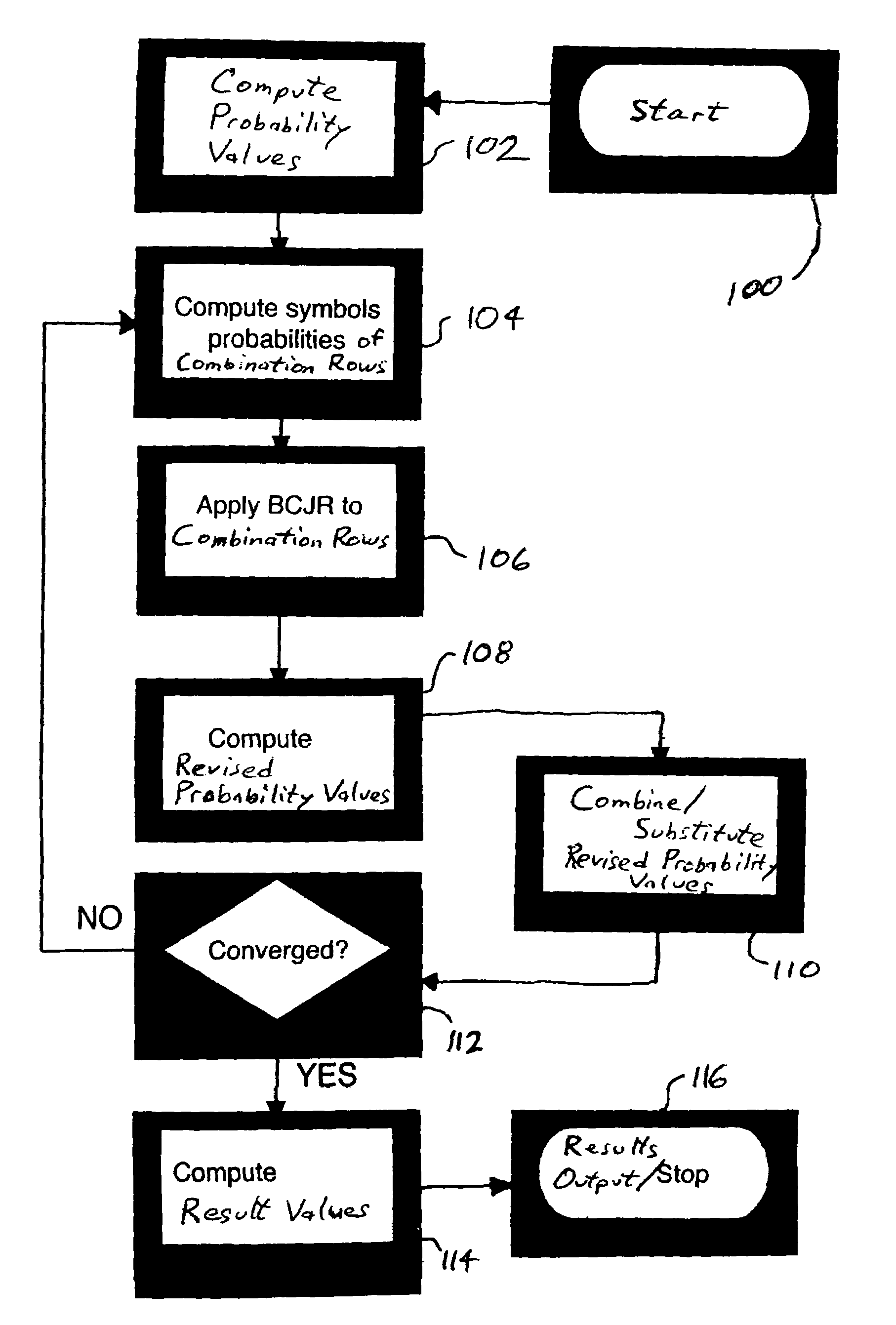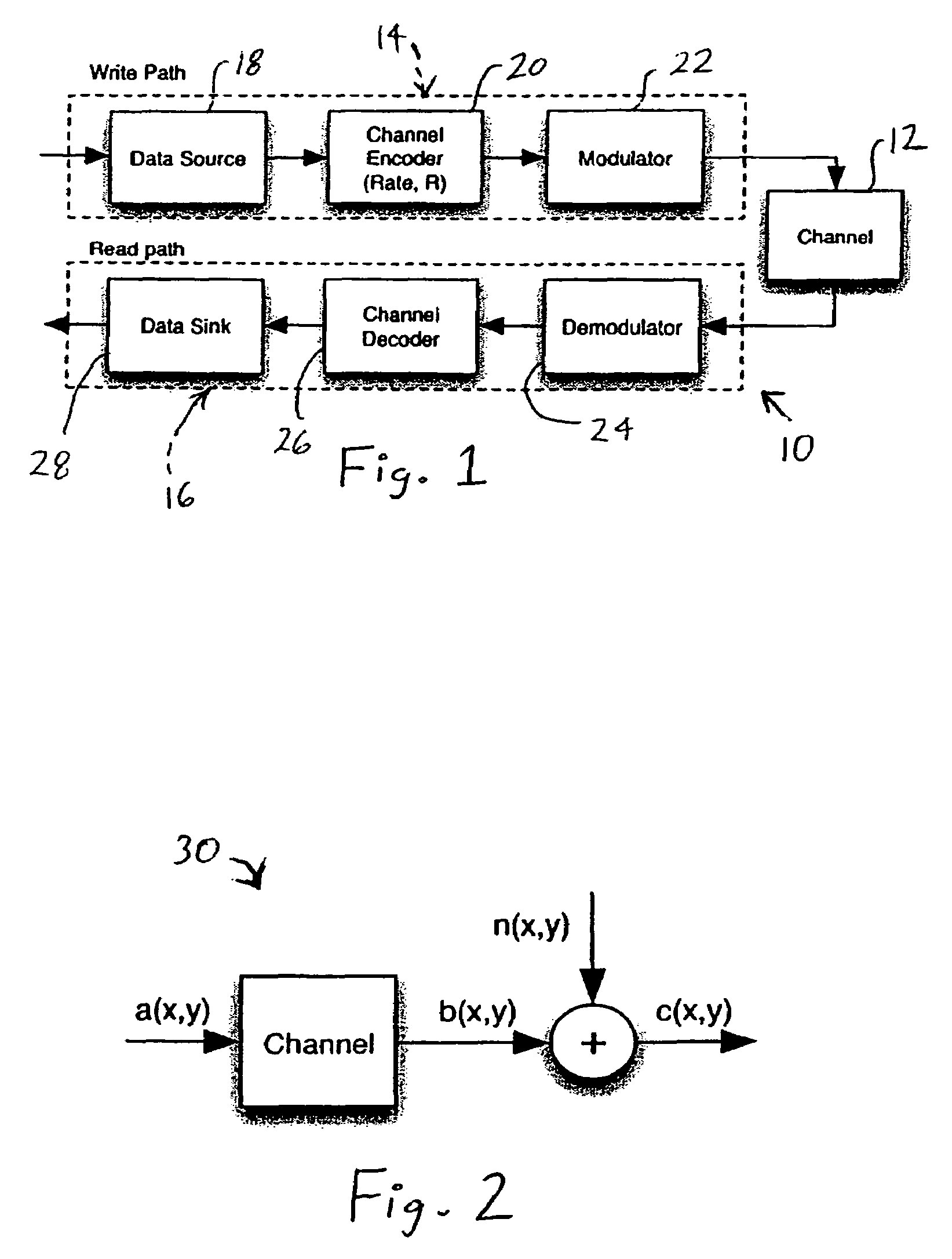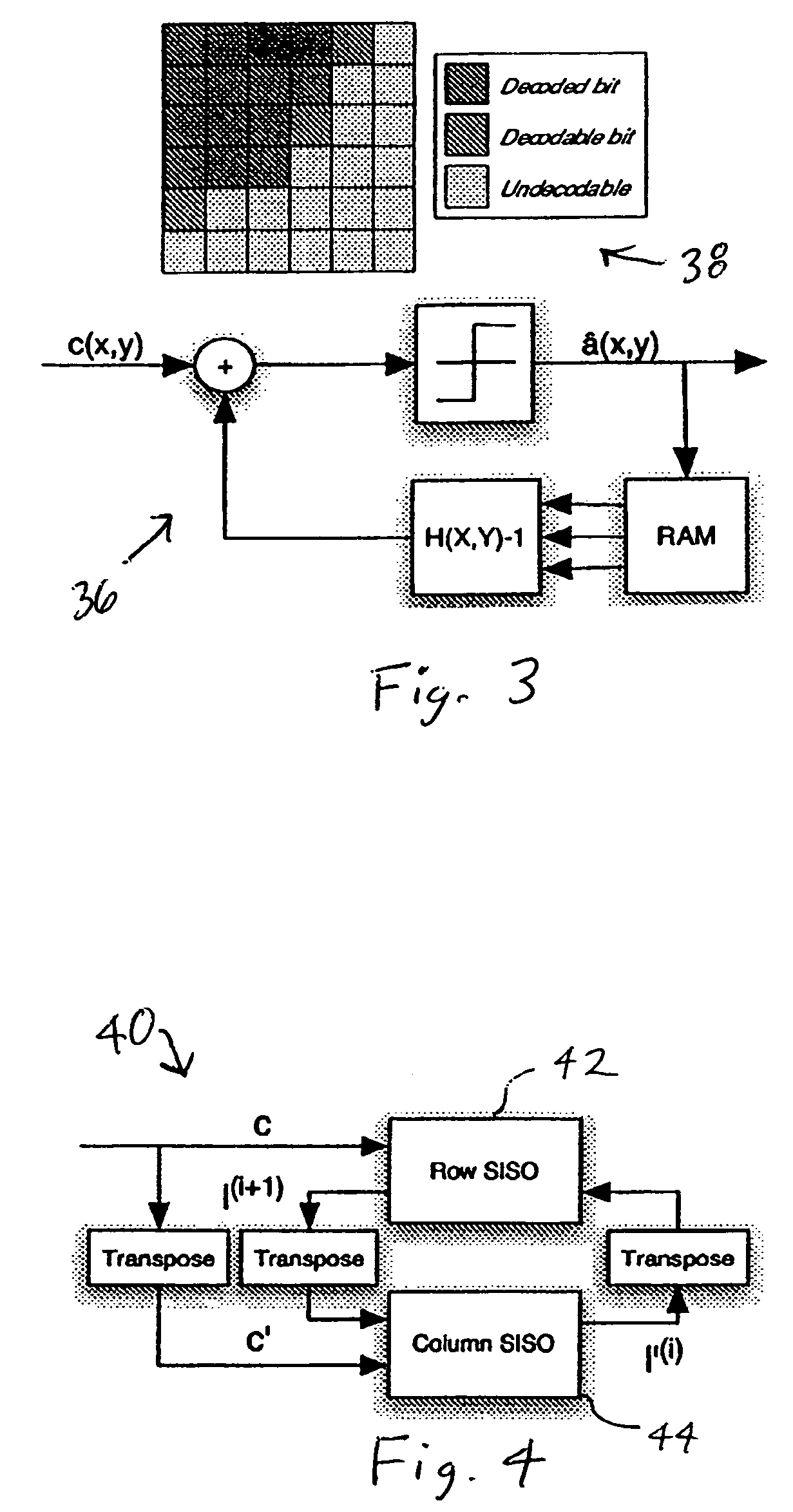Method and system for near optimal iterative detection of the 2-dimensional ISI channel
a signal detection and iterative detection technology, applied in the field of method and system for signal detection and processing, can solve the problems of inability to know the optimal detection procedure with a constant per-bit complexity, inability to achieve the optimal detection procedure for 2-d isi channels, and inability to achieve the optimal detection procedur
- Summary
- Abstract
- Description
- Claims
- Application Information
AI Technical Summary
Benefits of technology
Problems solved by technology
Method used
Image
Examples
Embodiment Construction
[0026]FIG. 1 is a functional block diagram showing exemplary components of an exemplary data storage system 10 having a communications channel 12, by which information provided by way of a write path 14 is in turn communicated to a read path 16. The system 10, and the writing and reading performed by that system, are analogous to (and generally representative of) transmission and reception, respectively. That is, the data storage system 10 is representative not only of systems such as memory systems, in which data is stored in a medium represented by the channel 12, but also is representative of other communications channels as well, and the fact that the writing and reading operations may occur at different times is not relevant to the model.
[0027]A data source 18 of the data storage system 10 can be assumed to produce independent and identically distributed equally-likely binary digits. A channel encoder represented by a channel encoder block 20 introduces redundant information in...
PUM
 Login to View More
Login to View More Abstract
Description
Claims
Application Information
 Login to View More
Login to View More - R&D
- Intellectual Property
- Life Sciences
- Materials
- Tech Scout
- Unparalleled Data Quality
- Higher Quality Content
- 60% Fewer Hallucinations
Browse by: Latest US Patents, China's latest patents, Technical Efficacy Thesaurus, Application Domain, Technology Topic, Popular Technical Reports.
© 2025 PatSnap. All rights reserved.Legal|Privacy policy|Modern Slavery Act Transparency Statement|Sitemap|About US| Contact US: help@patsnap.com



